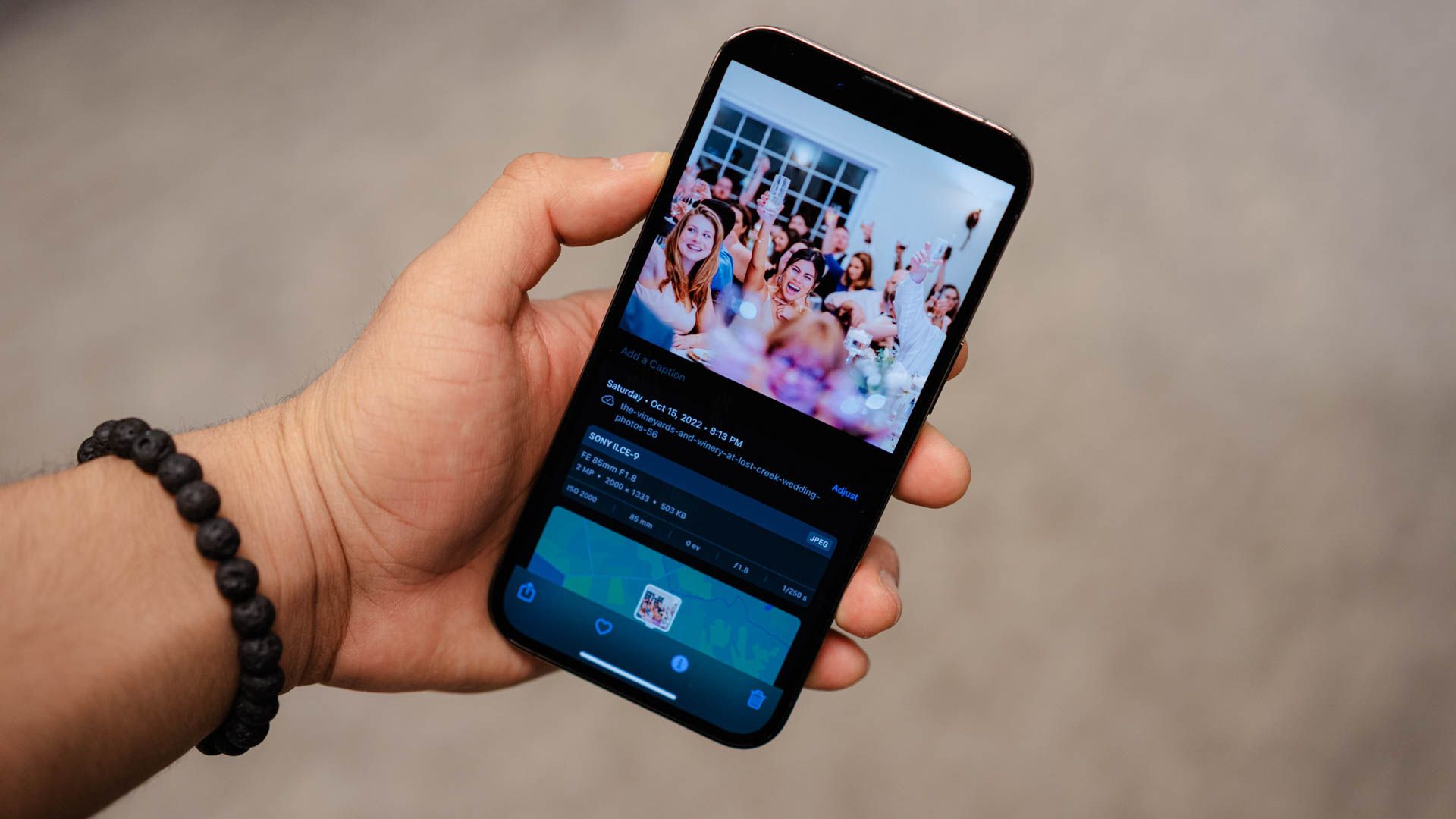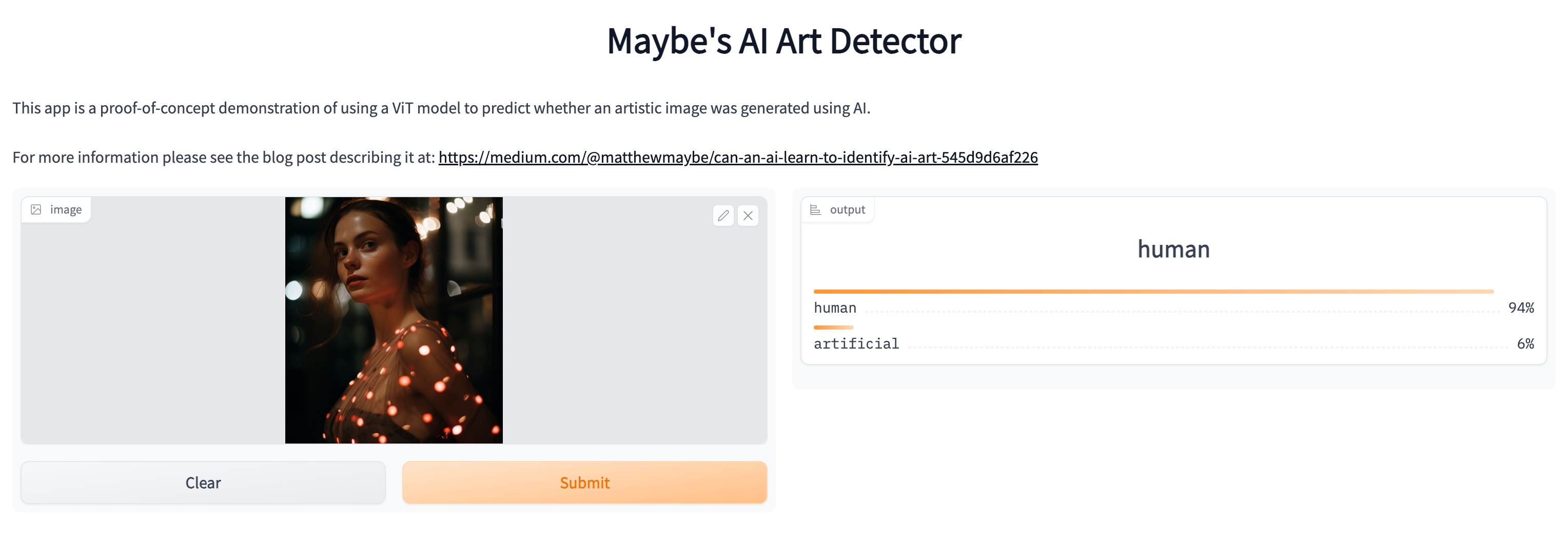
How Can You Spot a Photo Created by Machine Learning? Tips & Techniques

How Can You Spot a Photo Created by Machine Learning? Tips & Techniques
Quick Links
Key Takeaways
To tell if an image is AI generated, look for anomalies in the image, like mismatched earrings and warped facial features. Always check image descriptions and captions for text and hashtags that mention AI software. If all else fails, you can use GAN detection tools and reverse image lookups.
It’s getting harder all the time to tell if an image has been digitally manipulated, let alone AI-generated, but there are a few methods you can still use to see if that photo of the pope in a Balenciaga puffer is real (it’s not).
What Is AI Generated Photography?
An AI-generated photograph is any image that has been produced or manipulated with synthetic content using so-called artificial intelligence (AI) software based on machine learning . As the images cranked out by AI image generators like DALL-E 2 , Midjourney , and Stable Diffusion get more realistic, some have experimented with creating fake photographs. Depending on the quality of the AI program being used, they can be good enough to fool people — even if you’re looking closely.
Messing with AI to create fantastical images can be fun, and even help brainstorm ideas, but it has raised concerns over digital rights, privacy, and copyright . If someone uses an AI likeness of someone without their consent that depicts them in an intentionally humiliating light, for example, that’s a huge problem. So how do we know if an image is real or churned out by AI?
4 Ways to Check If a Photo Was Made by AI
At the current level of AI-generated imagery, it’s usually easy to tell an artificial image by sight. Fingers or glasses look off. Light sources don’t make sense. Backgrounds are warped.
But there are other, more technical ways to dig into an image if you’re still not sure. We’ll get to that below, but we’ll start with the most common-sense tip on the list.
Check the Photo Caption/Description and Comments
Oftentimes people playing with AI and posting the results to social media like Instagram will straight up tell you the image isn’t real. Read the caption for clues if it’s not immediately obvious the image is fake.
Usually, it’ll say something like, “This image was generated by feeding my photos into AI,” or “This image isn’t real. It was made with Midjourney.” They’ll also include hashtags like #aiaart, #midjourney, #mjv5 (for Midjourney version 5 ), and so on. Sometimes people will post the detailed prompts they typed into the program in another slide.
The comments can also be a clue. The original poster might tell you the image is machine-made there, or if the poster doesn’t fess up to using AI, keen-eyed commenters will notice and call it out.
Some accounts are devoted to just AI images, even listing the detailed prompts they typed into the program to create the images they share. The account originalaiartgallery on Instagram, for example, shares hyper-realistic and/or bizarre images created with AI, many of them with the latest version of Midjourney. Some look like photographs — it’d be hard to tell they weren’t real if they came across your Explore page without browsing the hashtags.
Look for Weirdness
Though rapidly improving, AI generated images can still come out looking borderline nightmarish. At the very least many attempts at photorealism by AI suffer from the uncanny valley effect . Look for anything in the photo that seems out of place, like:
- Strange-looking hands and teeth
- Warped/asymmetrical faces
- Mismatched accessories like earrings
- Garbled text in the background
- Smudged watermarks from photos used to train the program
- Unnaturally smooth textures
Items like eyeglasses might also blend into the skin of an AI generated subject, so be on the lookout for that as well.
Objects and people in the background of AI images are especially prone to weirdness. In originalaiartgallery’s (objectively amazing) series of AI photos of the pope baptizing a crowd with a squirt gun , you can see that several of the people’s faces in the background look strange. The water in some shots also appears to be coming from nowhere.
Try Using a GAN Detector
AI image generators use Generative Adversarial Networks, or GANs. There are a few apps and plugins designed to try and detect fake images that you can use as an extra layer of security when attempting to authenticate an image. For example, there’s a Chrome plugin that will check if a profile picture is GAN generated when you right-click on the photo.
Results from these programs are hit-and-miss, so it’s best to use GAN detectors alongside other methods and not rely on them completely. When I ran an image generated by Midjourney V5 through Maybe’s AI Art Detector , for example, the detector erroneously marked it as human.

As with AI image generators , this technology will continue to improve, so don’t discount it completely either.
Related: Audio Deepfakes: Can Anyone Tell If They’re Fake?
Run an Image or Web Search
If you aren’t sure of what you’re seeing, there’s always the old Google image search . These days you can just right click an image to search it with Google and it’ll return visually similar images.
You can also use the “find image source” button at the top of the image search sidebar to try and discern where the image came from. If it can’t find any results, that could be a sign the image you’re seeing isn’t of a real person.
If the image is used in a news story that could be a disinformation piece, look for other reporting on the same event. If no other outlets are reporting on it, especially if the event in question is incredibly sensational, it could be fake.
AI Images of the Future
These programs are only going to improve, and some of them are already scarily good. Midjourney’s V5 seems to have tackled the problem of rendering hands correctly, and its images can be strikingly photorealistic .
This will probably end up in a similar place to cybersecurity, an arms race of image generators against detectors, each constantly improving to try and counteract the other. Until regulations catch up with the tech, where it goes is anyone’s guess.
Related: How Good Is Midjourney at AI Art? We Compared All the Models
Also read:
- [Fixed] CS:GO FPS Drops Issues
- [New] Exclusive Review Best Free Videocall Platforms W/ Screen View
- [New] Go Live on Youtube with Minimum Follower Criteria Met
- 2024 Approved Sonic Storytelling with Soundtracks in iMovie
- Advanced Email Writing Techniques Empowered by AI: Utilizing ChatGPT in the Workplace
- Advanced Strategies for Proficiently Using ChatGPT for Notes and Organization
- AI and Comedy Collide: Assessing ChatGPT's Capacity to Entertain and Elicit Giggles
- AI and Writing: Why Chatbot Solutions May Not Meet the Needs of Content Authors
- AI Artist: Copyright Issues & Responsibilities
- AI Code Warriors: Can Gemini Outperform ChatGPT for Developers?
- Ballads Battleground: ChatGPT vs Shepherds, Alpacas Unite!
- Hassle-Free Process to Revamp Your ScanSnap iX5e Driver Compatibility on Windows Systems
- How Agile Practices Clash with Advanced AI Techniques, According to Latest Studies | ZDNet
- In 2024, Planning to Use a Pokemon Go Joystick on Vivo Y28 5G? | Dr.fone
- TamilTunes Handbook Downloading & Trimming Melodies for Calls for 2024
- Why It Matters to Be Courteous When Speaking to Artificial Intelligence: Insights on ChatGPT, Alexa & Siri.
- Win Struggles: Restoring Steam Offline Functionality
- Title: How Can You Spot a Photo Created by Machine Learning? Tips & Techniques
- Author: Larry
- Created at : 2024-12-21 12:42:46
- Updated at : 2024-12-28 11:50:52
- Link: https://tech-hub.techidaily.com/how-can-you-spot-a-photo-created-by-machine-learning-tips-and-techniques/
- License: This work is licensed under CC BY-NC-SA 4.0.